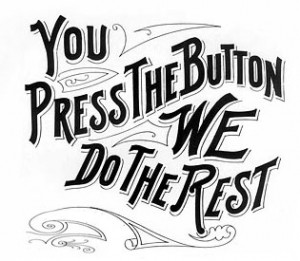“Where do I start?” seems to be one of the most commonly asked, and most intensely discussed and debated, topic on the various discussion forums over the years. Yet a clear consensus hasn’t really emerged.
Normally I don’t wade into those discussions when the question is asked generically. The reason is that without specifics about the situation, it is really hard to answer. There isn’t a clear set of step-by-step directions that say “Start here” followed by (2), (3) and so on.
Here’s how I look at it.
The theoretical end-game (which you likely never reach) is perfect one-piece-flow at takt time, with a perfectly safe work environment, producing 100% defect-free product, with no environmental impact, delivering it exactly when the customer needs it, without any wasted motion.
The practical end-game comes when the laws of physics and the limits of known technology become the limiting factors for further progress. (And even in that case, this is a usually a limit of human knowledge, which can be improved.)
The beginning is where ever you are.
There is no first step.
There is only the next step that moves you incrementally and tangibly toward perfection.
That next step is going to depend largely on what you are starting with.
The variation of starting points is what confounds the efforts to set down a formula. Any abstract attempt to answer the “Where do I start?” question must build in assumptions that answer the “Start from where?” question.
Here are a couple of examples.
If there is so much clutter and junk that people have to move things out of the way just to get work done, then absolutely, begin with the classic starting point – 5S. That can take anyone a long way as they learn to question why something is out of place, and come to realize that introducing new things into the workplace can will alter the way work is done. Best to do it on-purpose than randomly.
On the other hand, if the place is fairly neat, and most of the things are where they need to be, or close, and “looking for stuff” is not a huge impediment to the work, then I might be inclined to let workplace organization naturally evolve as part of the effort to establish some degree of stability.
If there is a hugely varying customer demand signal hitting the shop floor every day, calculating takt time is an exercise in frustration. If nobody believes it is possible to stabilize the demand, they aren’t much interested in hearing about takt. So the “first steps” might be to work on a leveling system so people have some solid ground to stand on.
It comes down to what is, right now, disrupting the effort to smooth out the work.
Maybe it’s quality and tons of rework. Then we’ve got to work on that. Or part shortages. Then at least contain the problem until a long-term solution can be put into place.
Sometimes it is leader’s knowledge. They don’t believe, or don’t understand, how improvement is possible. Countermeasure? Because “knowledge” is the next impediment to improvement, the “first step” becomes some kind of leader education, study mission, or other experience that is going to give them some confidence that they can do better (and it won’t be painful to get there).
If the organization has a lot of functional silos that are disrupting each other, it could be really beneficial to take a cross-functional team through a really deep exercise to understand how their system works and why it performs as it does. (this is a good time to use the current-state value stream map or a makagami.)
How do you know?
Ah – and that is why people ask the question in the first place.
As much as I hate to say it, I think the answer is “from experience.” This is one place where it might be worth your while to bring in someone who has done this a few times and get an opinion.
But if they tell you where to start without first personally assessing where you are, I’d question the quality of the answer. “There is no substitute for direct observation,” or, to use the Japanese jargon, genchi genbutsu. You can’t answer the question without first understanding the specific situation. At least I can’t, which is probably why I stay out of those debates.
I’d like to hear what you think. Feel free to leave comments.
